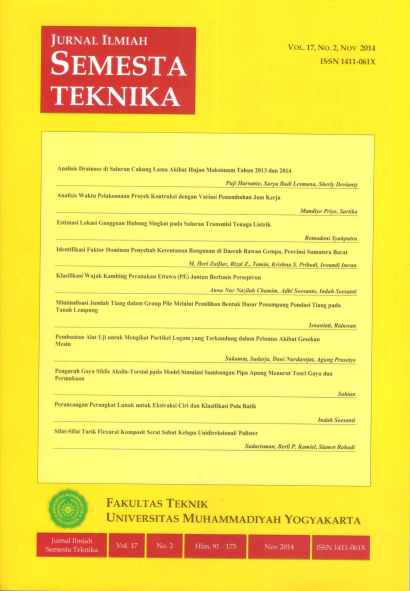Estimasi Lokasi Gangguan Hubung Singkat pada Saluran Transmisi Tenaga Listrik
DOI:
https://doi.org/10.18196/st.v17i2.418Abstract
In this paper, a method for short circuit fault location estimation which uses data from both ends of overhead transmission line and which does not require the data to be synchronized is described. The method fully utilizes the advantages of digital technology and numerical relaying which are available today and can easily be applied for off-line analysis. The described scheme does not require real-time communications, only off-line post-fault analysis. The method allows for accurate estimation of fault location irrespective of fault types, fault resistance, load currents, and source impedances. The simulation for single line to ground fault and symmetrical three phase fault with the variation of fault resistance of 0 ohm, 10 ohms, 30 ohms, 50 ohms, 70 ohms, and 100 ohms, respectively. The simulation has been done by using Matlab software. The simulation results of estimation error are 0.296% for single line to ground fault and 0.112% for symmetrical three phase fault, respectively. The results have shown that the method can accurately estimate the location of short circuit fault on power transmission lines.
Downloads
Published
How to Cite
Issue
Section
License
Semesta Teknika is licensed under a Creative Commons Attribution 4.0 International License.
Authors who publish with this journal agree to the following terms:
- Authors retain copyright and grant the journal right of first publication with the work simultaneously licensed under a Creative Commons Attribution License that allows others to share the work with an acknowledgement of the work's authorship and initial publication in this journal.
- Authors are able to enter into separate, additional contractual arrangements for the non-exclusive distribution of the journal's published version of the work (e.g., post it to an institutional repository or publish it in a book), with an acknowledgement of its initial publication in this journal.
- Authors are permitted and encouraged to post their work online (e.g., in institutional repositories or on their website) prior to and during the submission process, as it can lead to productive exchanges, as well as earlier and greater citation of published work (See The Effect of Open Access).









